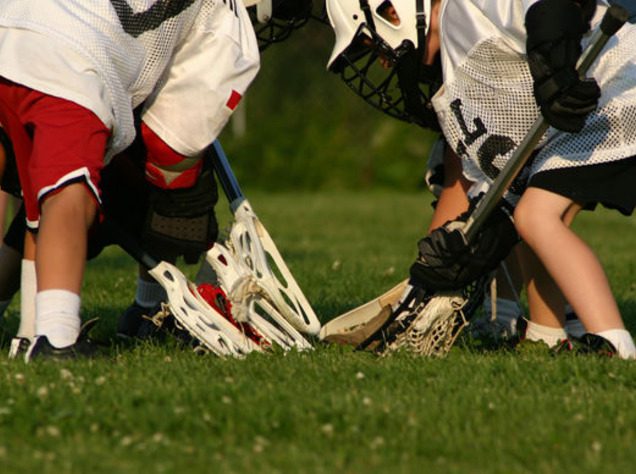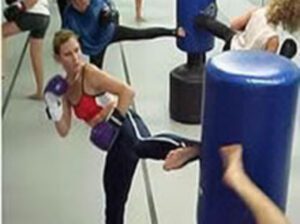The Face-Off
Generally speaking, the face-off in lacrosse is one of the most important aspects of the game. Lacrosse rules vary across different leagues, but face-offs often occur at the beginning of the game, after halftime, and after each goal. Of course, the face-off will dictate which team has more possession of the ball on offense. College lacrosse teams even recruit players who are only on the field for face-offs, affectionately nicknamed FOGO because they Face Off + Get Off the field immediately. So, simply put, it’s not an exaggeration to say that face-offs will determine the outcome of a lacrosse game. In order to be successful at face-offs, you need an acute understanding of them. Each face-off is a new individual battle and requires the people to know the strategy behind winning the ball, recognizing what your opponent’s go-to moves are, and relentlessly practicing specialized face-off drills. The next time you take to the face-off circle, use CoachUp’s tips to outsmart and outmuscle your opposition!
Up Your Arsenal
To many, the face-off is often described as a complicated form of rock, paper, scissors. The most common moves are the clamp, the jam, and the rake. The clamp involves quickly rolling your wrists over so that the back of the head clamps down on the ball before your opponent’s does. That way, you can send it out to one of your wingmen or flick it into open space and pick up the ground ball. However, the clamp is often neutralized by the jam, a move in which the lacrosse head and shaft is quickly punched over the ball entirely in order to block your opponent out from any access.
Remember, with the jam, you’re not trying to secure possession of the ball immediately so much as you’re trying to take the opposition out of position. After the head of your stick is completely front of the ball and against your opponent’s stick, you can push it behind you open space. Then, finally, you’ve got the rake — a move that often beats the jam. This is because the face-off man moves his stick under the jam before it can disable him. In the time it takes for the opposition to bring his stick up and over the ball, you’ll need to strike, so a quick reaction is key. As his stick is in the air, simply punch the ball out from the circle and chase after it.
To bring it full circle, the rake usually loses to the clamp because it takes more time to flatten the stick and swipe than it does just to simply trap it. Now, you can see how much of a back-and-forth, cat-and-mouse game the face-off can be. To win face-offs, a player has to read his opponent correctly. Which grip does he chose for each move? How does he position his body? Where does he put the ball when he wins? The ability to read opponents comes with practice and in-game experience. Each ref blows the whistle at a different frequency for each face-off, so getting in tune with the timing element is huge. At the end of the day, quickness reigns over all, so practice on your rapid reaction skills.
Drills
No matter what move a face-off man chooses to use, he should win the face-off if his reaction time is quick enough. There are many ways to increase your reaction time, but these two exercises are some of our favorites. The first one goes like this — get in your face-off position and move your stick over the ball and back using your jam grip as fast as you can. If you can, try to avoid touching the ball. This drill increases arm and wrist strength and helps your muscles adjust to the motion and positioning of the face-off. After every practice, do a long, strong set of this simple exercise — but don’t be lazy! The second exercise is focuses on reaction time; this time, get in face-off position and use a friend or alarm to imitate the whistle. Treat the drill like a game scenario, just without opposition in the way!
Quickly cycle through your moves over and over again, reacting as soon as possible to the whistle. Try new sequences — like jam, clamp, rake, clamp, jam, etc — in order to create successful patterns. Don’t just practice them in a row as your muscle memory won’t be as agile to react as accurately in-game. The faster you can react in this drill, the faster you’ll be during the game. Of course, the best way to be ready for the game is to practice with an opponent, but if that isn’t available, this will do the trick!
(Related: Read about proper goalie technique here.)
Huddle Up
Successful face-off athletes need strategy, discipline, focus, speed, and power — so, it’s understandably one of the most difficult jobs in lacrosse. Being a great contributor from the face-off circle can either keep you on the field longer, or help you find your niche on the team. Either way, having a vastly expansive and reliable game under center will always help. So, get out there and practice, practice, practice! You won’t improve your reaction skills and abilities without focused practice, so what are you waiting for?
How useful was this post?
Click on a star to rate it!
Average rating 5 / 5. Vote count: 1
No votes so far! Be the first to rate this post.


